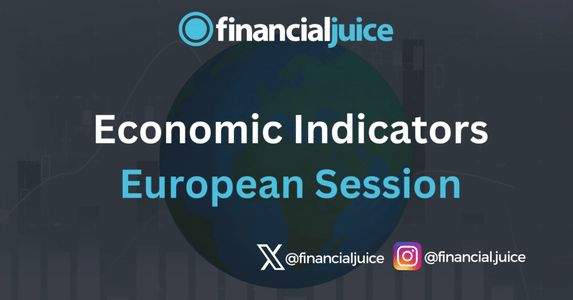
Week Ahead: Economic Indicators (EU)
Hey, Traders!
For the April 15th week, here is a list of all of the major economic indicators being released during the EU Session, with a brief synopsis of what they represent and what to possibly expect from the markets in reaction.
Tuesday 16th April
02:00 ET
UK Unemployment Rate
The ILO (International Labour Organisation) Unemployment Rate released by the National Statistics is the number of unemployed workers divided by the total civilian labor force. It is a leading indicator for the UK Economy. If the rate is up, it indicates a lack of expansion within the U.K. labor market.
What to expect:
As a result, a rise leads to weaken the U.K. economy. Generally, a decrease of the figure is positive (or bullish) for the GBP, while an increase is negative.
05:00 ET
German ZEW data:
German ZEW Economic Sentiment
The ZEW Indicator of Economic Sentiment is calculated from the results of the ZEW Financial Market Survey. The ZEW is followed closely as a precursor and predictor of the Ifo Sentiment Survey and as such is followed closely by market participants. The data is released around the middle of the month for the current month. The survey provides a measure of analysts’ view of current economic conditions as well as a gauge of expectations about the coming six months. The latter measure tends to have the larger market impact and reflects the difference between the share of analysts that are optimistic and the share of analysts that are pessimistic. About 350 financial experts take part in the survey.
German ZEW Current Conditions
This survey summarizes the net percentage of positive and negative responses regarding the expectations for economic growth in the next 6 months, as given by financial analysts from banks, insurance companies and large industrial enterprises. For example, if 50% believe that the economic situation will improve and 20% believe it will get worse, the result will be +30.
What to expect:
A reading that is stronger than forecast is generally supportive (bullish) for the Euro, while a weaker than forecast reading is generally negative (bearish) for the Euro.
Wednesday 17th April
02:00 ET
UK CPI
The consumer price index (CPI) is an average measure of the level of the prices of goods and services bought for the purpose of consumption by the vast majority of households in the UK. It is calculated using the same methodology developed by Eurostat, the European Union’s statistical agency, for its harmonised index of consumer prices (HICP). The CPI is the Bank of England’s target inflation measure.
The consumer price index is the most widely followed indicator of inflation. An investor who understands how inflation influences the markets will benefit over those investors that do not understand the impact. In countries such as the UK, where monetary policy decisions rest on the central bank’s inflation target, the rate of inflation directly affects all interest rates charged to business and the consumer. Inflation is an increase in the overall price level of goods and services. The relationship between inflation and interest rates is the key to understanding how indicators such as the CPI influence the markets – and your investments.
What to expect:
By tracking inflation, whether high or low, rising or falling, investors can anticipate how different types of investments will perform. Over the long run, the bond market will rally (fall) when increases in the CPI are small (large). The equity market rallies with the bond market because low inflation promises low interest rates and is good for profits.
A higher than expected reading should be taken as positive/bullish for the GBP, while a lower than expected reading should be taken as negative/bearish for the GBP.
05:00 ET
Eurozone CPI
Changes in the index provide an estimate of inflation, as targeted by the European Central Bank (ECB). Eurostat provides statistics for the EU and Eurozone aggregates, individual member states and for the major subsectors. Over the short-term, the central bank focuses on a number of core measures which seek to strip out the most volatile components and so give a much better guide to underlying developments. Amongst these, financial markets normally concentrate upon the narrowest gauge which excludes energy, food, alcohol and tobacco.
What to expect:
Inflation (along with various risks) basically explains how interest rates are set on everything from your mortgage and auto loans to Treasury bills, notes and bonds. As the rate of inflation changes and as expectations on inflation change, the markets adjust interest rates. The effect ripples across stocks, bonds, commodities, and your portfolio, often in a dramatic fashion.
Friday 19th April
02:00 ET
UK Retail Sales
Retail sales measure the total receipts at stores that sell durable and nondurable goods. The data include all internet business whose primary function is retailing and also cover internet sales by other British retailers, such as online sales by supermarkets, department stores and catalogue companies. Headline UK retail sales are reported in volume, not cash, terms but are available in both forms. The data are derived from a monthly survey of 5,000 businesses in Great Britain. The sample represents the whole retail sector and includes the 900 largest retailers and a representative panel of smaller businesses, including internet sales. Collectively, all of these businesses cover approximately 90% of the retail industry in terms of turnover.
What to expect:
Retail sales not only give you a sense of the big picture, but also the trends among different types of retailers. Perhaps apparel sales are showing exceptional weakness but electronics sales are soaring. These trends from the retail sales data can help you spot specific investment opportunities, without having to wait for a company’s quarterly or annual report.
A higher than expected reading should be taken as positive/bullish for the GBP, while a lower than expected reading should be taken as negative/bearish for the GBP.





